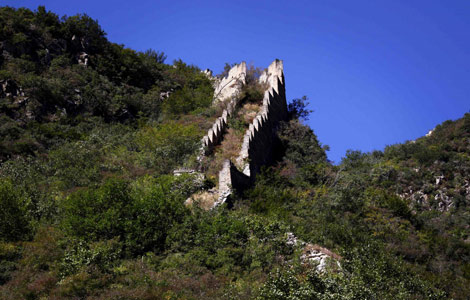Zither fetches record price in auction
Updated: 2010-12-10 11:25
By Guo Shuhan (China Daily European Weekly)
|
|||||||||||
 |
| The Song Dynasty guqin, Stones among the Pine Trees. Provided to China Daily |
An auction price that's sweet music to the ears
A rare Song Dynasty (AD 960-1279) guqin, a traditional plucked seven-stringed zither, sold for a record 136.64 million yuan (15.54 million euros) at Beijing Poly's autumn auction on Dec 4.
It is the first Chinese instrument to fetch an auction price of more than 100 million yuan.
The last record for this kind of musical instrument was set in 2009 at China Guardian Auctions when a Ming Dynasty (1368-1644) guqin titled Yuelu Zhiyin went under the hammer for 28.14 million yuan.
Since 2003, when a guqin named Remnants by the Mahatma (Dasheng Yiyin) crafted in the Tang Dynasty (AD 618-907) sold for 8.91 million yuan ($1.34 million), the guqin has been attracting much attention in the Chinese auction market.
Its rarity is one of the reasons for its growing popularity among collectors. It is estimated that there are only about 2,000 extant ancient guqin.
The one sold at Beijing Poly's auction, named Stones among the Pine Trees (Songshi Jianyi), is believed to be the only well-preserved one from the Song Dynasty. It was produced by the imperial workshop during the reign of Emperor Song Huizong (1082-1135).
It came under Emperor Qianlong (1711-1799) in the Qing Dynasty (1644-1911), who not only left inscriptions on it but also had a special case made for it.
"It (the auction price) is a bit of a surprise, but also a delight," says Li Yizhou, director of the antiques and rare curios section of Beijing Poly. "Five buyers indicated they were looking at around 5 or 6 million yuan before the bidding started, so we thought that would be the final purchase price."
Li says it was 2003 that saw a group of mature guqin buyers and collectors emerging, pushing auction prices into millions of yuan for the first time.
He also attributes the soaring prices to the growth of the art market.
"It's a reflection of this historical instrument regaining its traditional high position," Li says. "The instrument was admired greatly by ancient intellectuals, even ranking higher than ancient China's four precious articles of the writing table - xuan paper, brush, ink and ink slab."
Guqin master Chen Leiji, who performed at the opening ceremony of the 2008 Beijing Olympic Games, says the guqin has been languishing for a long time.
The 43-year-old recalls seeing the record-breaking Song Dynasty guqin at collector Fan Boyan's home in Shanghai when he was a child and marvels at its good condition.
"This is a time of revival of traditional culture. After being listed as an intangible culture heritage by UNESCO in 2003 and appearing at the Beijing Olympics, the guqin has become known to more people at home and abroad." Chen says.
Gao Peifen, a fifth-generation inheritor of the Zhucheng school of guqin-playing, stresses that every guqin is a work of art that combines sculpting with calligraphy. Many come with poems inscribed on the inside cover and the imperial seal on it. Some even have a decorative jade head.
"The instrument is ornamental as well as practical. Some of the Tang or Song Dynasty guqin sound even better than newly-made ones," Gao says.
When asked about criticisms of the "whopping price" for some guqin, Wang Peng, an acclaimed guqin maker who appraised the record-breaking Song Dynasty guqin, becomes agitated.
"The guqin is an embodiment of Chinese music, philosophy and culture. When a violin with only a few hundred years of history behind it can sell for hundreds of thousands of dollars, why can't the guqin, with a history of thousands of years, attract high prices?" Wang says.
"We should show confidence in, and love for, our own culture."











